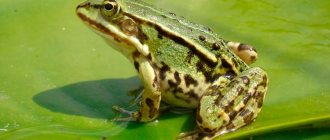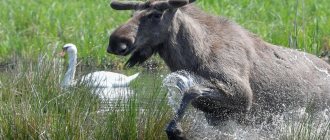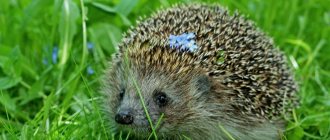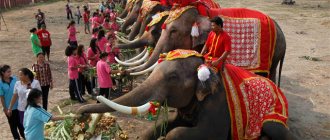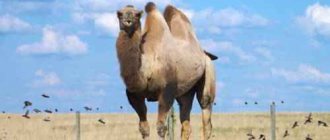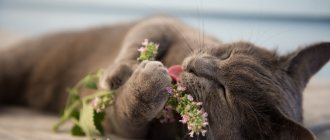Beavers belong to the class of mammals of the rodent order and are quite large - reaching 1 m in length. They are vegetarians and feed on the bark and young branches of trees. The habitat is streams, rivers and lakes in wooded areas. They are deservedly considered excellent builders. They build 2 types of housing - stationary burrows and floating huts. They also usually have strong families.
There are 2 types of beavers: Canadian and common, differing in the number of chromosomes (40 and 48, respectively). The latter has 8 subspecies in modern taxonomy.
Economic purpose until the middle of the 20th century.
For many centuries, beaver skin was considered one of the most valuable and was used everywhere for sewing outerwear and luxury items. Data from the archives of Tsarist Russia indicate that about 130 thousand skins were supplied annually from the New World. However, it is complex to process and requires certain skills. Only experienced specialists can prepare skins for use in the clothing industry. Also in the 20th century. Environmental organizations have intensified their activities, and their ideas are supported by an increasing number of people. Therefore, gradually the demand for beaver fur has fallen, and the animal is practically not harvested for these purposes.
It is also not recommended to use beaver meat due to its rodent nature. But selective perfumery still uses beaver glands (the so-called perfume stream) for its products to this day.
Properties and composition
The plant composition of the food consumed determines the healing and culinary properties of beaver meat. Dishes made from this delicacy are useful for people who follow healthy diets and watch their weight. The high protein content will be beneficial for the growing body of children, pregnant women, and athletes. In addition to the nutritional content, meat contains vitamins and microelements necessary for humans:
- vitamin A – participates in the growth of muscle and bone tissue;
- vitamins B1, B2, B5, B9, B12 – promote cell division, absorption of protein and fat;
- vitamin E – develops reproductive function;
- calcium – strengthens bone tissue and hair;
- potassium – participates in strengthening the cardiovascular system;
- iron – increases the level of hemoglobin in the blood.
Smoked beaver
Eating beaver meat helps improve the water-salt balance in the body, strengthens the nervous system, and stimulates brain activity.
Smell
Beaver meat, when carefully cut, has a faint wild smell. To eliminate it, the carcass must be completely bled, blood clots and hematomas removed from the resulting wounds. If the smell does not disappear after these operations, the meat cut into pieces is soaked in cold water.
It is much worse when the musk gland is trimmed when removing the skin. The liquid from it gets onto the carcass and transmits the unpleasant smell of beaver stream to the meat. It is practically impossible to get rid of it. Such products are not allowed for sale.
Calories and nutritional value
Beaver meat does not contain much fat and is low in calories. There are only 146 kcal per 100 g of product. It is ideal for people interested in healthy diets. The product is easily digestible. Thanks to the presence of essential amino acids, it strengthens the body's protective properties.
Beaver meat is distinguished by its nutritional value. It contains 24% protein (more than beef), 5% fat. Calorie content and composition allow us to classify beaver meat as a dietary product.
Negative global trends
The consequences of a global refusal to exterminate part of the population (usually 10-15% of the total number in a particular territory) are a multiple increase in the number of beavers in the area. They have almost no natural enemies, except for wolves, lynxes and wolverines, of which there are few left. And with the active participation of the “greens,” beavers have become an invasive species in some areas. The fact is that beavers were listed in the Red Book and their population was saved at the legislative level.
This led to certain negative consequences:
• the delicate balance between man and nature has been disrupted due to a significant increase in the number of beavers harming farmers and gardeners;
• entire forests (for example, in Latvia) are going under water due to beavers actively digging channels to transport their wood;
• drying out of spruce forests in floodplains (river valleys above river beds), which in turn become centers of infections and various types of forest contamination;
• the recreational potential of territories in the eyes of investors is significantly deteriorating due to the presence of fallen trees.
However, ultra-green Europeans insist that it is inadmissible to increase the percentage of beavers killed or the period of permitted beaver hunting.
Description of the beaver
The appearance of the beaver is very different from the appearance of other representatives of the rodent order, which is explained by the semi-aquatic lifestyle of our hero. From a biologist's point of view, the notable features of the beast are its huge incisors, flat scaly tail and webbed hind feet with a special forked “combing” claw on the second toe, as well as a number of structural features of the pharynx and digestive tract.
Beavers are the most massive rodent fauna of the Old World and the second largest rodents after the South American capybaras. The body of the animal is squat, dense, and has a spindle-shaped shape; its rear part is widened, only at the root of the tail it sharply narrows. Body length is 80 – 120 cm. Adults weigh on average 20-30 kg, rarely the weight can reach 45 kg. The Canadian species is slightly larger in size than the usual.
The relatively small rounded head with a meek and thick neck almost does not turn to the sides. The eyes are small, with a vertical pupil and a transparent nictitating membrane (to protect the eyes under water). The ears are small, barely protruding from the fur. The external auditory openings and nostrils have special muscles that contract when immersed in water. The lip projections can close behind the self-sharpening incisors, isolating the oral cavity, allowing beavers to chew on vegetation underwater without opening their mouths.
Animals' eyes react almost exclusively to movement; poor vision is more than compensated by excellent hearing and smell, which are the main senses on land.
The tail is flat, reaches 30 cm in length, 13 cm in width; in the Canadian beaver it is shorter and wider. The paddle-shaped part of the tail is covered with large horny scales, between which there are sparse hard bristles.
The five-fingered limbs are shortened and have well-developed swimming membranes on the hind legs (they are rudimentary on the front legs). The front legs are much weaker than the hind legs and are used by the animal as hands - with the help of them the beaver drags objects, digs channels and holes, and processes food. The main organ of movement of the animal is the hind legs. On the second toe of the hind leg there is a bifurcated claw, consisting of two parts: the upper - pointed and lower - wide horny plate, which are movable relative to each other. This claw is used by the animal for hygienic purposes - it cleans and combs out the fur during molting, and removes parasites.
Beaver fur is light brown to black, most often reddish-brown. Sometimes there are piebald individuals with spots of different shades. The undercoat is thick and dark gray. The lower part of the body is more densely pubescent.
It has been noted that the light brown color type is older, it survived the Ice Age, therefore such beavers are better adapted to cold climates, while in more southern populations dark-colored individuals are most often found.
Positive factors
The environment-forming influence of the beaver on the ecosystem can and should be used in solving practical human problems, as both environmental authorities and numerous researchers in various fields (from economics to agriculture) believe.
Beavers are capable of:
1. Quickly but naturally change the hydrological regime of a region or specific area. These animals are characterized by the formation of local swampy-aquatic ecosystems.
2. Changing the direction of river channels to redirect water resources and regulate flow.
3. Increasing the number of representatives of near-water flora and fauna, hydrobionts and amphibians. Mammals that eat plant and shrub food (hares, moose and deer) get more food - they willingly eat the bark and greenery left by beavers (which is from 30 to 60% of the total mass) of aspens and willows. Birds colonize beaver territory very quickly, since the spread of insects occurs almost at lightning speed due to the presence of dying or significantly damaged trees in flooded areas. Also, they are the main food of lynxes, whose extinction also frightens conservationists.
4. Improving the quality of flowing water due to the deposition of pollution by beaver dams.
5. By removing aspen from a specific area, they contribute to the spread of an already rare species of black alder.
6. The holes left by beavers become the home of badgers, otters, minks and muskrats.
The life activity of beavers in all its aspects (wood removal, construction, active reproduction) has a broad impact on the ecosystem.
Storage conditions
After purchasing or cutting it yourself, you should immediately place the beaver meat in the cold. At home, at room temperature, it deteriorates very quickly - in 3-4 hours. The product will remain in a regular household refrigerator for 2 days, after which it will have to be frozen. This should be done like this: cut the meat into medium-sized pieces (you can do it in portions), put it in separate bags, and place it in the freezer. It is advisable to store the product in the freezer for up to 3 months. It is believed that later its quality will decrease, and its volume will decrease due to freezing of water.
Systemic impact
The impact of beaver construction activities on watercourses depends on the location of the riverbed. If there are high banks, a rise in water up to 1 m will not lead to flooding. And in the lowlands, significant flooding often occurs. And in this regard, not only the tree and shrub flora changes, but also the herbaceous flora. Yellow egg capsule, pondweed, horsetail-cattail and reed vegetation begin to predominate in the area.
The soil-forming processes of the coastal zone are also subject to change. Islands often appear.
The biomass of aquatic invertebrates, which serve as food for numerous animals and birds, is increasing. The territory becomes more suitable for nesting.
All this determines the use of beavers as a natural stimulator of the diversity and abundance of fish, birds and animals on small rivers. The abiotic and biotic components of semi-aquatic ecosystems constantly interact and change as a result of beaver habitat in the region.
The influence of beavers on the biocenosis, in particular plant-animal complexes, allows us to conclude about their leading role in the communities where they live.
Alternative solution
In the animal world, which one way or another includes humans, survival predetermines active participation in creating optimal conditions for their offspring: protection, provision of food, etc. Therefore, humans have no right to beaver population In a year, the female gives birth to 2-4 (or even 6) cubs, which after 2 years are ready to start families. To prevent forests and rivers from turning into swamps or dehydrated areas, the number of beavers should be monitored and actively influenced if necessary. However, it is impossible to deny their positive impact on many aspects of ecosystems, so the complete elimination of beavers from territories is highly undesirable.
How to get rid of unwanted neighbors
This question interests every person whose house is inhabited by a family of beavers. Animals are not migratory, so if they settle somewhere, they do so for a long time. When driving them out of their homes, be prepared for a real war for survival.
If you notice that beavers live near you, then the first thing you should do is secure your garden. To prevent night raids, surround it with a chain-link mesh, burying its lower part in the ground so that uninvited guests do not dig under it.
It is also a good idea to get a large breed dog that barks loudly. These animals remind beavers of wolves, with whom they have always been their worst enemies. But the dog should be free-range and not chained. Otherwise, there will be no particular benefit from a pet.
Beavers typically mark trees they want to fell. To do this, they nibble them a little. Some summer residents recommend lubricating damaged areas with used machine oil. In this case, the animals will not touch the plants.
If there is one individual living nearby, and not a whole family, then you can try to catch it and then release it away from your home. Beavers are nocturnal, so it is best to try after dusk. But be very careful, as rodents often show aggression even towards people. Track a beaver and throw a blanket over it. Be careful.
A good way to combat beavers is with ultrasonic repellers. However, if they do not work, then the animals will get used to these devices and they will simply become useless. There have been many similar cases in practice.
